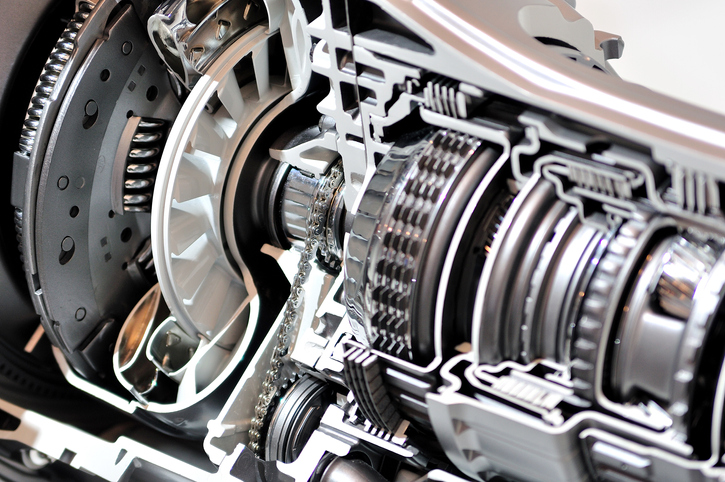Torque and Horsepower
Whenever someone is talking about the performance of their car, two things almost always come up: torque and horsepower. But what you might not know is while the two are related, they are actually very different. Torque is a measure of the twisting motion of force amplified by distance. Example: When using a wrench to turn a bolt, a wrench with a longer handle has more torque – and thus turns the bolt much more easily – than one with a shorter handle when applying the exact same force because it has greater distance (i.e., length). Torque is measured in pounds-feet, meaning a force in pounds acting on the end of a lever measured in feet. For example, if that wrench is 2 feet long, and you put 100 pounds of force on it, you are putting 200 pounds-feet) of torque onto the bolt.
Horsepower is the rate at which work is done. The formula for horsepower is torque times RPMs divided by 5,252 radians-per-second. So even though torque considers that work is being done and how much force it uses, horsepower is how that force is used to do even more work through more repetitions of that action. If you were to compare the peak torque and peak horsepower of your engine on a graph, you would see that torque tops out much sooner than horsepower.
The reason for this is that torque relies on factors such as distance of the stroke or throw of your pistons or crankshaft, whereas horsepower relies on the frequency of these pieces cycling through the process to get the work done. More frequency at that level of torque means more power is produced to do more work.
Tips On How To Increase Torque
If you compare different types of motors you’ll see that some rely on a lot of torque for steady, low-end, low-rev power. Tractors and diesel engines are prime examples. These engines are designed to do the work, but not necessarily at very fast speeds. They have longer piston rods and crank shafts with larger throw, so the piston is propelled a greater distance to produce more torque to turn the crankshaft.
In contrast, car engines have shorter piston rods with the capability of greater frequency and a shorter distance to travel between combustion cycles. The faster the pistons can move, the greater the horsepower and the faster your vehicle can go.
Ways to increase torque and horsepower
There are several different ways to increase torque and horsepower:
-
- Install a cold-air intake: A cold-air intake improves turbulence to the combustion chamber, allowing fuel and air to mix more uniformly and detonate much more evenly; this improves compression and leaves less fuel waste. A word of caution: On a stock vehicle, this may cause problems with your engine’s computer, as it is not calibrated for aftermarket parts. For this reason, it is recommended to use a dynamometer to help “tune” a stock vehicle engine for optimal performance.
- Engine Maintenance: Adding performance oil additives will also improve torque and horsepower since it allows for easier movement of your piston through the bore, which increases your torque and subsequently your horsepower. ELEV8 reduces maintenance costs and increases the longevity of your engine because its nanoparticles fill in the microscopic chips and imperfections in – and bonds to – the moving metal engine parts to greatly reduce friction. With less friction, your engine can withstand high temperatures that would otherwise warp or damage parts.
- Larger diameter throttle body: Another aftermarket modification – increasing the throttle body – allows for more air to enter your intake manifold; however, as with cold air intakes, effective tuning is critical to the optimal performance of a larger throttle body. are important to these parts.
- Improve the intake manifold and fuel injectors: These parts will allow for better mixture of fuel and air during the combustion process. Improving turbulence is an important key to increasing horsepower.
- Add exhaust headers: As important as bringing air in is, it is just as important to get the exhaust out; otherwise, you will impair combustion. Improved exhaust headers, as well as wider valves and performance cams and lifters, help ventilate the cylinder more thoroughly, which lets more fuel and air enter again during the intake cycle.
- Install a turbo or a supercharger: Your engine is almost like a pump, bringing in fuel and air on one side and pushing it out the other side as exhaust and power. Turbo and superchargers force air into the combustion chamber, just like fanning a campfire to increase heat. With more complete ignition of fuel, and an improved ability to introduce more fuel into the cylinder during combustion, you reach peak torque faster and improve your power with higher RPMs.
The easiest way to increase your torque and horsepower
By adding improvements to your engine, you can increase your torque. Even with something as basic as an oil additive to help the process run smoother and reduce friction that inhibits torque. Of all these ways to increase torque and horsepower, the easiest – and least expensive – is to add ELEV8 Powertrain Treatment to your oil. By significantly reducing friction, it will not only increase your torque and horsepower, but your fuel economy and engine life. Add ELEV8 Performance to your engine oil with your next oil change and feel the difference almost immediately.

